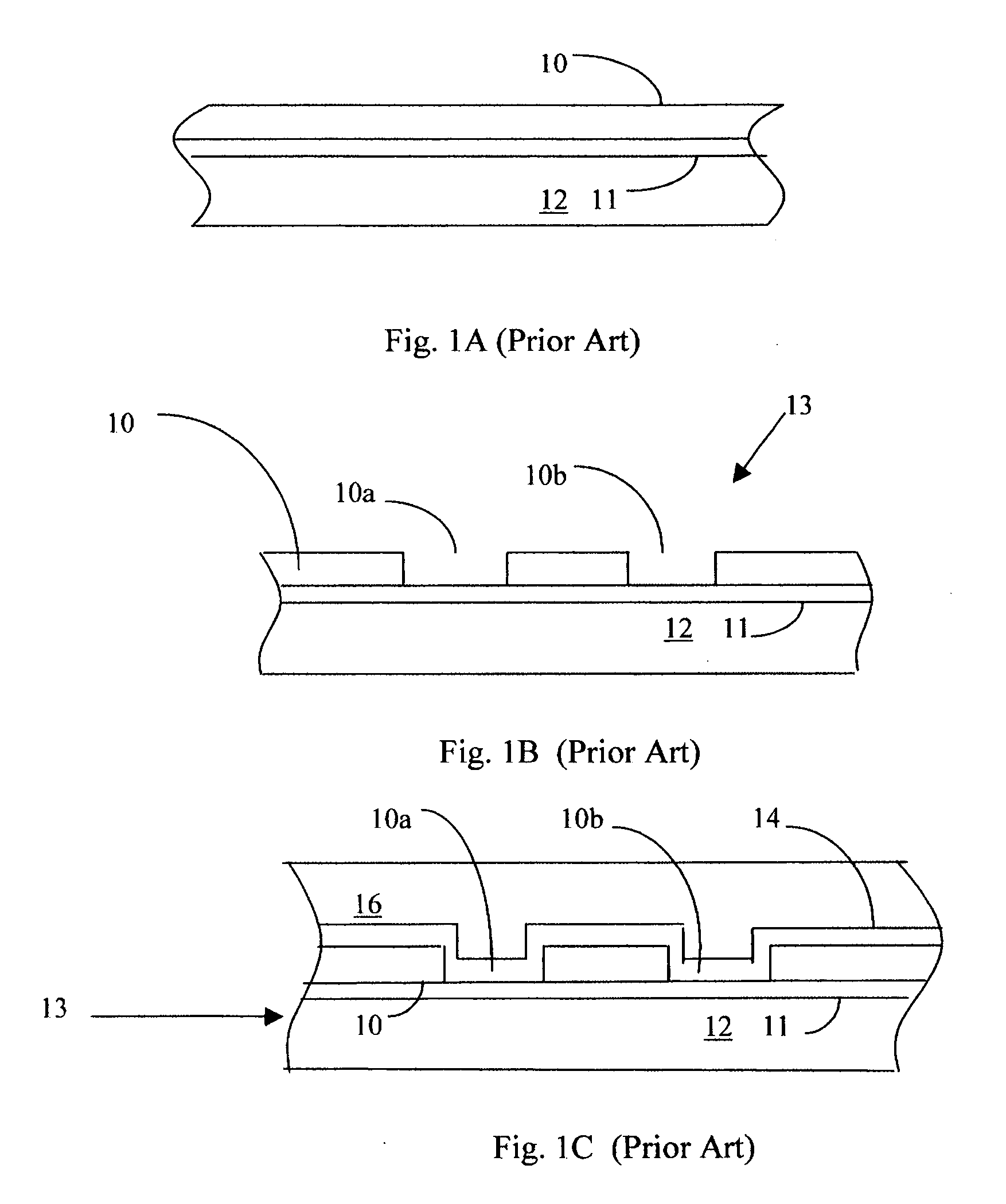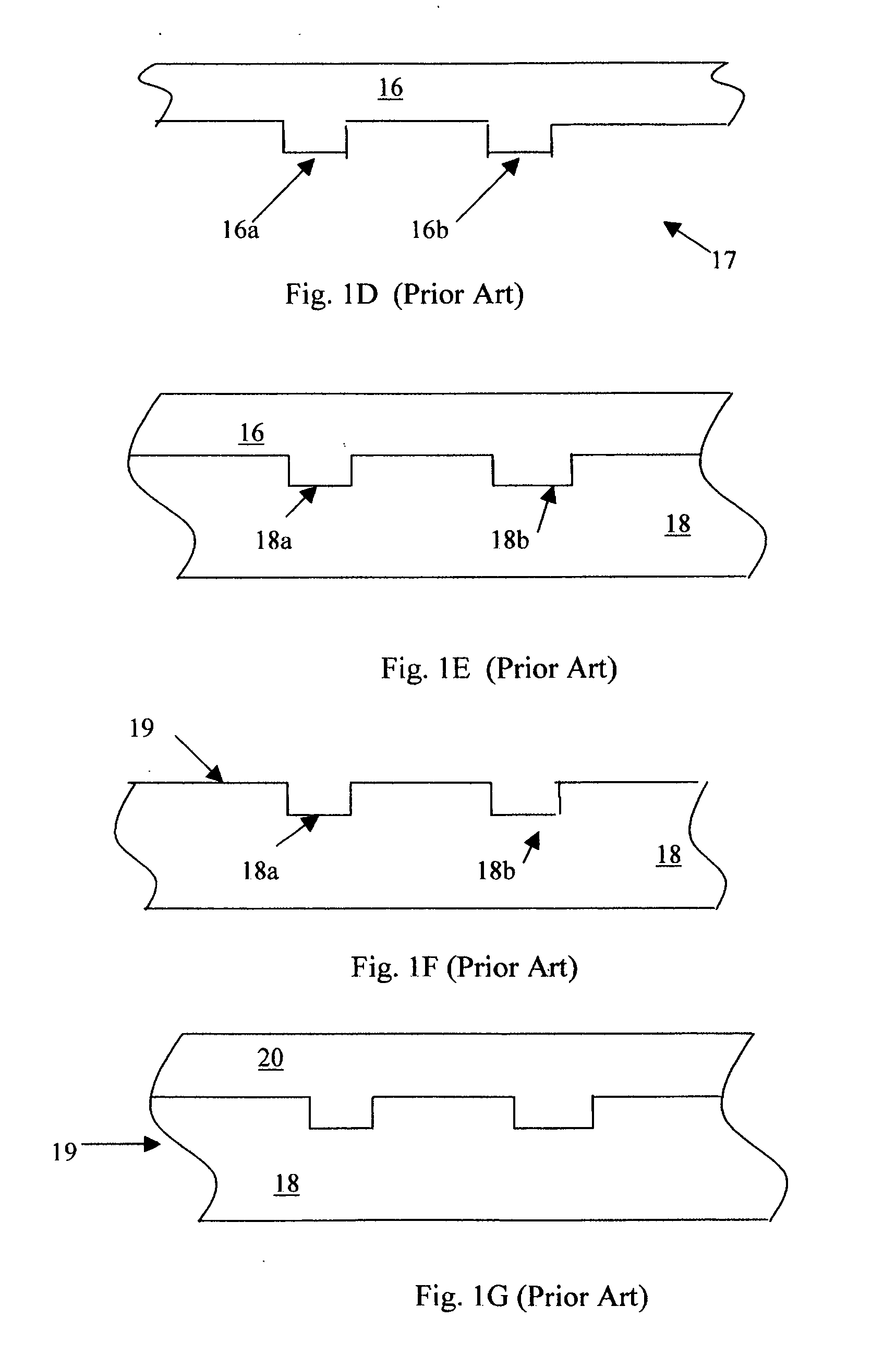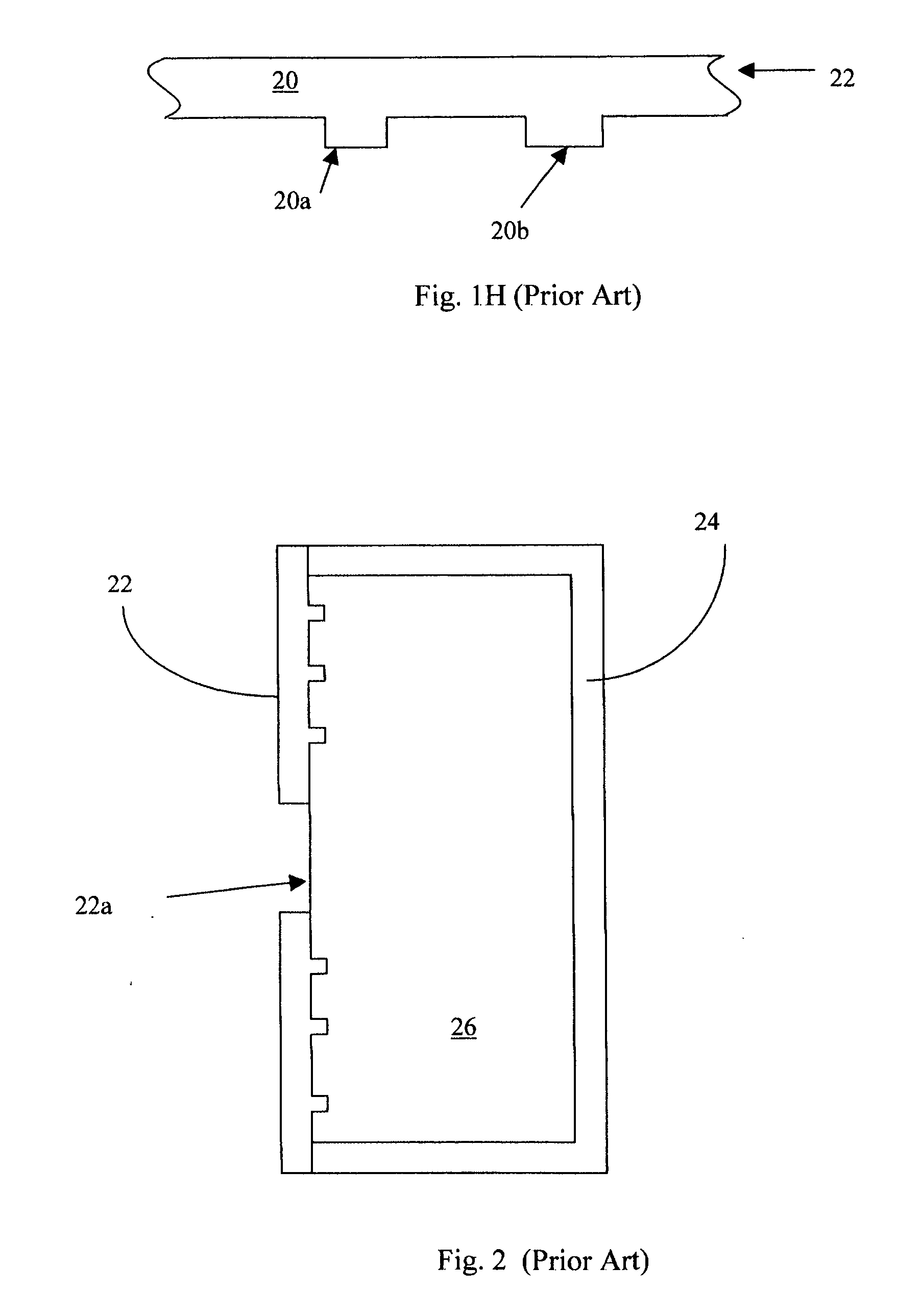Method and apparatus for making a stamper for patterning CDs and DVDs
a patterning cd and dvd technology, applied in the field of stampers, can solve the problems of high cost, complicated and expensive, and high cost of plating process and glass substrate starting material, and achieve the effect of reducing or no sacrifice in data storage density and reducing the minimum feature pitch siz
- Summary
- Abstract
- Description
- Claims
- Application Information
AI Technical Summary
Benefits of technology
Problems solved by technology
Method used
Image
Examples
Embodiment Construction
[0038] Referring to FIG. 4A, a method in accordance with one embodiment of our invention includes providing a sheet 100. Sheet 100 is typically metallic, and is formed by rolling. During rolling, an ingot of material is fed through rollers 101 to form sheet 100. (Although only two pairs of rollers are shown in FIG. 4A, typically more than two pairs of rollers are used during this process.) As the material passes through the rollers, it becomes progressively thinner until it is in the form of sheet 100. Sheet 100 can be a metal such as a spinodal copper alloy. (Spinodal structures are discussed by D. E. Laughlin and W. A. Soffa in “Spinodal Structures”, Metals Handbook, Ninth Edition: Volume 9, Metallography and Microstructures, American Society for Metals, pages 652-654 (1985), incorporated herein by reference.) Spinodal structures have the advantage of being bendable without distortion. However, sheet 100 can be other materials as well, e.g. nickel, stainless steel or brass. In one...
PUM
| Property | Measurement | Unit |
|---|---|---|
| wavelength | aaaaa | aaaaa |
| wavelength | aaaaa | aaaaa |
| thick | aaaaa | aaaaa |
Abstract
Description
Claims
Application Information
 Login to View More
Login to View More - R&D
- Intellectual Property
- Life Sciences
- Materials
- Tech Scout
- Unparalleled Data Quality
- Higher Quality Content
- 60% Fewer Hallucinations
Browse by: Latest US Patents, China's latest patents, Technical Efficacy Thesaurus, Application Domain, Technology Topic, Popular Technical Reports.
© 2025 PatSnap. All rights reserved.Legal|Privacy policy|Modern Slavery Act Transparency Statement|Sitemap|About US| Contact US: help@patsnap.com



